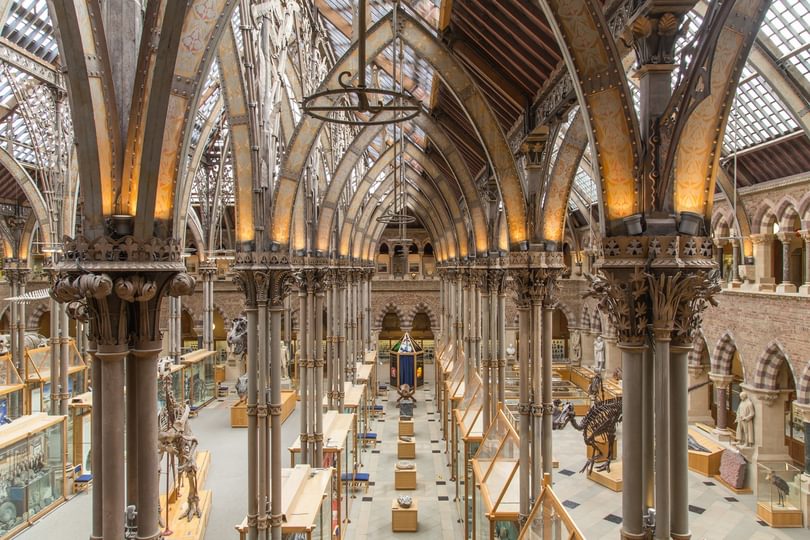
This blog has been authored by DPhil students Wouter Lindeboom (UKRI), Holly Yeo and Jamie Wilmore (The Oxford Inorganic Chemistry for Future Manufacturing Centre for Doctoral Training), and Dr Natalia Reis (The Brazilian National Council for Scientific and Technological Development) who are all contributors to the Oxford Martin Programme on the Future of Plastics.
Getting involved with public outreach is a valuable and rewarding experience, using different skills from the day-to-day work of scientific research. We hope that presenting research in an accessible way inspires people to engage with learning and also increases their trust in science: the problems of plastic waste are well-known, but as scientists we hope to provide some of the solutions! The need for social distancing put a halt on most in-person outreach in 2020. Instead, events have been taking place online.
Digital Diversity
The family science fair ‘Super Science Saturday’ is held in March and November at the Oxford University Museum of Natural History. These events involve scientists sharing their research with members of the public, often young families, with the aid of props or activities. The events are a great way to connect people with cutting edge science and the scientists doing this research.
The theme for the November 2020 event was ‘Diversity’. It aimed to showcase the wide variety of people across the university who work together to protect the planet and conserve the natural environment. We were excited to contribute and take on the challenge of designing content which is both engaging and personal through the constraints of an online event.
Polymers: from cradle to grave
Our research focuses on contributing to a sustainable future of plastics using our expertise in polymer chemistry. We wanted to highlight four key aspects of any polymer’s life cycle: the raw materials used to make it (monomers), the method of manufacturing (catalysis), the polymer properties, and the potential to design them for both recycling and degradation after use.
By clicking on different sections of an interactive graphic, it’s possible to explore a bit more about each part of the cycle. The target age group was children from 8-12 years, so it was important to use appropriate language, images, and content. To help consolidate the ideas, the graphic was accompanied by an activity: learners made a polymer model by threading beads onto a string. Physically engaging with the content can be a big boost to understanding and, in some senses, mirrors the in-person activities which might take place at the museum under different circumstances.
At the start of the cycle is the monomer section where it was explained that these are the building blocks of polymers – like the beads used to make a necklace or bracelet. The difference between the sources of the monomers was discussed, for example, highlighting the potential to use renewable resources like waste plants (lemon peel) or waste gases (carbon dioxide).
monomers were explained as the building blocks of polymers – like the beads used to make a necklace
Next, the process of making a polymer, using catalysis, was described – the accompanying activity involved threading the beads together on a string to make a big chain, much like how on the molecular scale the monomer units are ‘joined together’ to make the polymer. We tried to use this activity to explain how both the number and types of beads used can affect the resulting polymer properties – in the activity properties mean pattern/colour but in the chemistry they correspond with strength, elasticity and toughness.
The next activity involved a challenge to find different types of polymer in the home as a means of exploring these different physical properties.
Finally, how polymers could, in future, be designed to diversify their end-of-use options was considered. In the interactive model, it was illustrated that by using different monomers it was possible to design the polymers for easier recycling or even biodegradation. In the activity various options were also possible - they could throw it in the bin, they could unthread the beads (degradation), or it could be re-constructed into a new pattern (recycling).
Meet the Scientist!
It was important for the project to be about both the science and the researchers; this is challenging to achieve online, as the normal conversations that happen at in-person events are not possible. Instead, each section was accompanied by a short Q&A session with a member of the group. Questions included: “What is your typical day like?” and “Why did you become a scientist?”. Putting a face to the work makes it feel more relatable and accessible; hopefully this inspires further interest in science and learning.
The Impact
We hope this project will show that polymers are a vast and really important class of materials. There is huge diversity in polymer properties and applications: in the future we hope our work will improve the diversity in the raw materials used to make them and in their end-of-life options. Polymers are not all petrochemical-based and single-use!
More broadly, we hope that this will encourage children, and the public in general, to understand some of the science we are undertaking, to see that scientists are as diverse as anyone else in their backgrounds, hobbies and, of course, to support the local museums.
This opinion piece reflects the views of the author, and does not necessarily reflect the position of the Oxford Martin School or the University of Oxford. Any errors or omissions are those of the author.